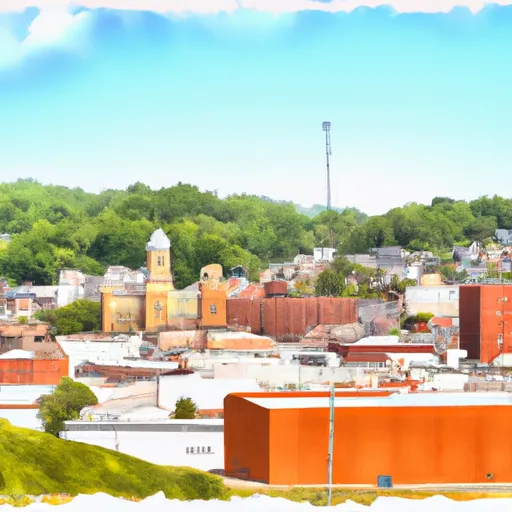-
 Snoflo Premium
Snoflo Premium
Get unlimited access to all our content
With no Ad interruptions! - Start Your Free Trial Login with existing account
Huddy
Eden Index
Climate
8.2
•
Recreation
2.0
•
Community
1.9
•
Safeguard
4.4/10

Huddy, Kentucky is a small community located in Pike County. It experiences a humid subtropical climate, characterized by hot and humid summers, mild winters, and abundant rainfall throughout the year. Summers in Huddy can be quite warm, with temperatures often exceeding 90°F (32°C), while winters are generally mild, with temperatures rarely dipping below freezing.
The hydrology constituents in Huddy are primarily influenced by the presence of the Russell Fork River, which borders the community. The river provides opportunities for various water-based activities such as fishing, boating, and kayaking. It is known for its scenic beauty and is a popular spot for nature enthusiasts.
In addition to the river, Huddy offers several outdoor recreation opportunities. The surrounding area is characterized by picturesque landscapes and wooded hills, making it ideal for hiking and camping. There are also designated trails for off-road vehicles, attracting enthusiasts of ATV riding. The region is rich in wildlife, providing opportunities for hunting and wildlife photography.
Overall, Huddy, Kentucky offers a favorable climate for outdoor activities, a beautiful river for water-based recreation, and scenic landscapes perfect for hiking and off-road adventures.
What is the Eden Index?
The Snoflo Eden Index serves as a comprehensive rating system for regions, evaluating their desirability through a holistic assessment of climate health, outdoor recreation opportunities, and natural disaster risk, acknowledging the profound impact of these factors on livability and well-being.
Climate Health Indicator (CHI): 8.2
Huddy receives approximately
1177mm of rain per year,
with humidity levels near 82%
and air temperatures averaging around
13°C.
Huddy has a plant hardyness factor of
6, meaning
plants and agriculture in this region thrive during a short period during spring and early summer. Most
plants will die off during the colder winter months.
By considering the ideal temperature range, reliable water supplies, clean air, and stable seasonal rain or snowpacks, the Climate Health Indicator (CHI) underscores the significance of a healthy climate as the foundation for quality living.
A healthy climate is paramount for ensuring a high quality of life and livability in a region, fostering both physical well-being and environmental harmony. This can be characterized by ideal temperatures, reliable access to water supplies, clean air, and consistent seasonal rain or snowpacks.
Weather Forecast
Streamflow Conditions
Big Sandy
Area Rivers
Big Sandy
Snowpack Depths
Big Sandy
Reservoir Storage Capacity
Big Sandy
Groundwater Levels
Recreational Opportunity Index (ROI): 2.0
The Recreational Opportunity Index (ROI) recognizes the value of outdoor recreational options, such as parks, hiking trails, camping sites, and fishing spots, while acknowledging that climate plays a pivotal role in ensuring the comfort and consistency of these experiences.
Access to outdoor recreational opportunities, encompassing activities such as parks, hiking, camping, and fishing, is crucial for overall well-being, and the climate plays a pivotal role in enabling and enhancing these experiences, ensuring that individuals can engage in nature-based activities comfortably and consistently.
Camping Areas
| Campground | Campsites | Reservations | Toilets | Showers | Elevation |
|---|---|---|---|---|---|
| Little Oak | 72 | 1,741 ft | |||
| Roan Mountain State Park | 107 | 2,902 ft | |||
| Cardens Bluff | 43 | 2,045 ft | |||
| Sugar Hollow City Park | None | 1,837 ft | |||
| Warriors Path State Park | 134 | 1,326 ft | |||
| Dennis Cove Rec Area | 20 | 2,594 ft | |||
| Watauga Dam Tailwater | 29 | 1,670 ft | |||
| Cabwaylingo State Forest | None | 1,161 ft | |||
| Low Gap Camp | 5 | 3,918 ft | |||
| Rock Creek Rec Area | 80 | 2,348 ft |
Nearby Ski Areas
Catastrophe Safeguard Index (CSI):
The Catastrophe Safeguard Index (CSI) recognizes that natural disaster risk, encompassing floods, fires, hurricanes, and tornadoes, can drastically affect safety and the overall appeal of an area.
The level of natural disaster risk in a region significantly affects safety and the overall livability, with climate change amplifying these risks by potentially increasing the frequency and intensity of events like floods, fires, hurricanes, and tornadoes, thereby posing substantial challenges to community resilience and well-being.
Community Resilience Indicator (CRI): 1.9
The Community Resilience Indicator (CRI) recognizes that education, healthcare, and socioeconomics are crucial to the well-being of a region. The CRI acknowledges the profound impact of these elements on residents' overall quality of life. By evaluating educational resources, healthcare accessibility, and economic inclusivity, the index captures the essential aspects that contribute to a thriving community, fostering resident satisfaction, equity, and social cohesion.

